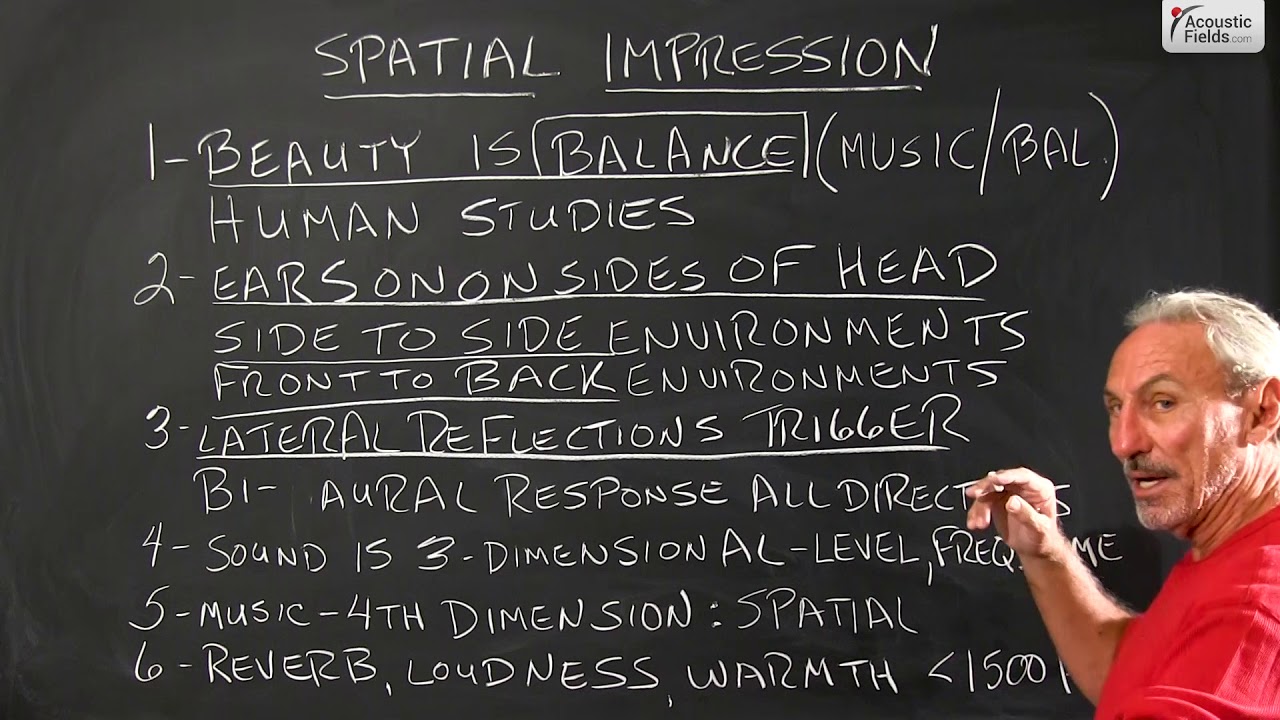Let’s talk about spacial impression. Kind of a fancy name but let’s break it down and I think we’ll understand what it means. For years and years and years companies do studies on what people consider beautiful. And they use human beings as examples. And one of the things they find in these studies is beauty is balance, meaning the eyes are at the right distance from each other, the nose is between the eyes exactly, it’s perpendicular, the mouth is directly below the nose, there’s a T formation.
Whatever criteria you want to use, the operative word here is balance. So beauty is balance. And balance in our music is what creates the beauty. So we have to keep those two things in mind. How do we listen? We listen with ears on the side of our head. And there’s a reason for that. We get side to side and front to rear spatial impressions of our environment, of our room, of source, of distance. A lot of localization going on here, a lot of ability to define distance, threats etc. Okay?
So these lateral reflections, they trigger what we call a bi-aural response which allows us to hear things in all directions, okay? So one of the things we’re really good at is localizing in a room. You can project a tone and hear the reflection coming back and measure the time distance between it. And if you’re really good, you can practice it and you can get pretty darn good at it. Blindfold yourself, walk through your room, walk towards the wall, speaking. You’ll be able to tell how close you are from the wall. Don’t cover your ears when you’re doing that.
A bi-aural response means we get this ability to hear kind of in a 3-dimensional platform. Okay? Now, inside that 3-dimensional platform we have 3 things that we have to focus on. We have a level, how loud is it? We have frequency and we have time. Okay? So those are the 3 dimensions that compose all of this that we just talked about.
But music has a 4th dimension. Music has spatiality. Okay? So music takes all of these things into consideration and adds reverb, loudness, warmth and most of this energy that we experience, that we enjoy, that gives us the spatial impressions within music is below 1500 cycles.
So music is very special and you should treat it that way. And you should treat it that way. Because it does a lot for you, okay? Especially in today’s times. So make sure your room is designed to get everything out of your sources. Make sure your speakers are set up correctly, make sure you have the right amount of treatment. Meet the speaker manufacturer halfway and at least set up the speakers correctly in your room. If you don’t do any treatment, meet the engineer and designer of the product halfway and set it up in the way he designed it. So that you can enjoy all this and hear all this. It’s in there but most of the time your setup in your room won’t let you hear it.
So spatial impression. Remember, beauty is balance and music is definitely beautiful.
—
This is an unedited transcript from our video series from Acoustic Fields. There will be some errors in grammar and sentence structure that occur during this translation process.
For complete understanding and comprehension, please view the video which is included in this text. For any additional information regarding this topic or others relating to room acoustics, please contact us directly at:
P: 520 – 392 – 9486







